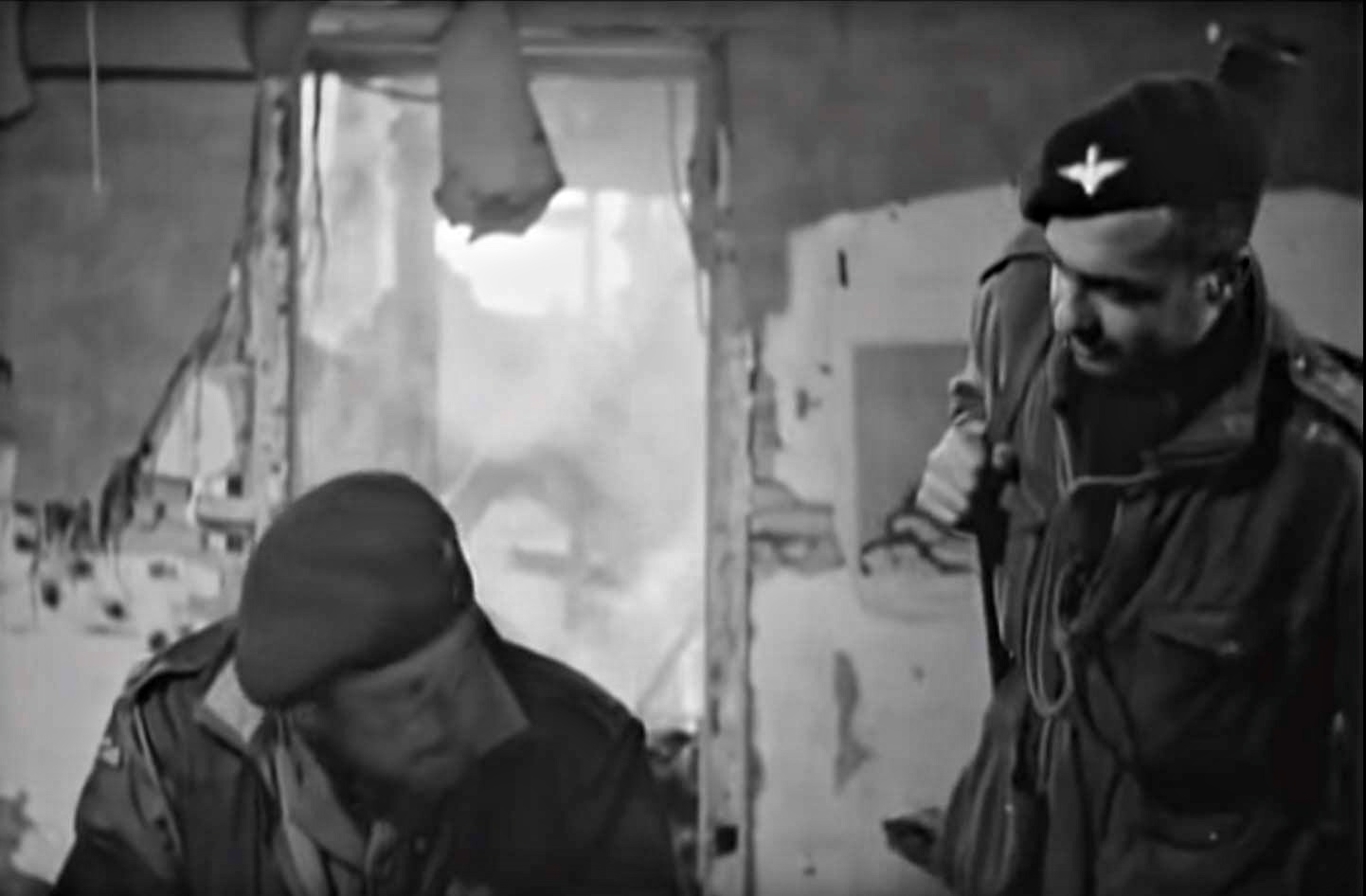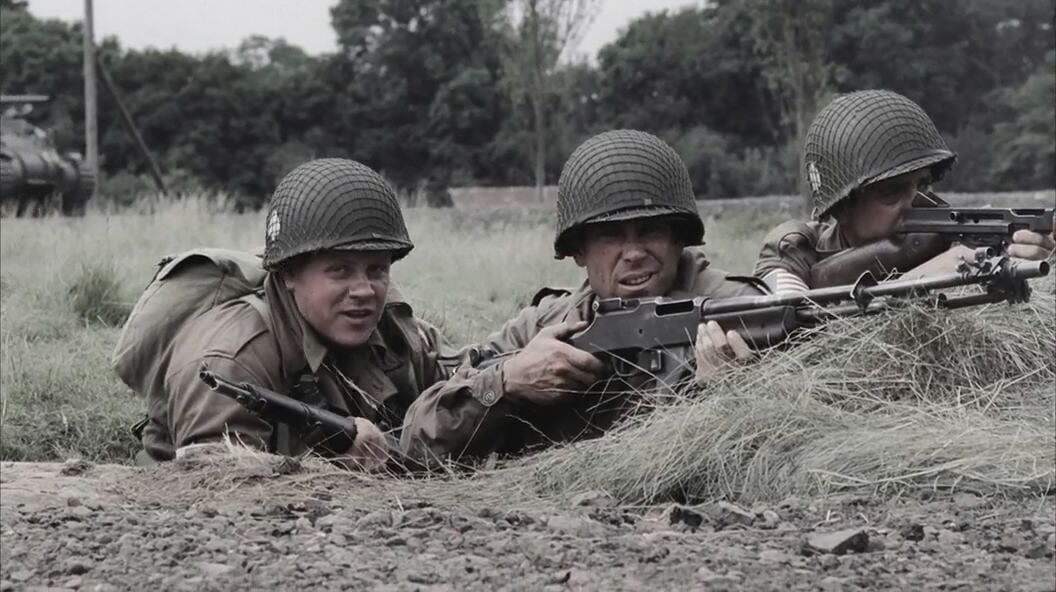The 75th anniversary of the launch of Operation Market Garden begins today. We’re going to spend a little time to remember it, and those who participated therein.
Anyone who has watched the epic 1977 film A Bridge Too Far understands how bold Operation Market Garden was. The plan that called for three airborne divisions with more than 41,000 men to drop behind enemy lines, capture and hold a series of bridges and bring an early end to World War II. As the film noted, bold plans can lead to spectacular failures–and sadly thousands of casualties.
Memorialized in more ways than the movie A Bridge Too Far
However, military history is filled with dozens (if not hundreds) of “do or die” battles that required a combination of daring and luck. When these succeed, military leaders are often praised for their brilliance and command of strategy, while those who fail are forever linked to a strategic or tactical disaster. In the case of Operation Market Garden, the plan was bold indeed. It required those 41,000 paratroopers and glider-borne soldiers along with a XXX Corps, which was made up of a full armored division, two infantry divisions and one armored brigade to take part in securing the bridges along a 60 mile salient into German-held territory.
The British 1st Airborne was expected to hold out behind enemy lines for four days–but the belief was that German resistance was broken, and the German Fifteenth Army was in full retreat. It was also thought that XXX Corps would face limited resistance and virtually no armor.
While the plan was conceived by British Field Marshal Bernard Montgomery, it had the support of Supreme AlliedCommander, American General Dwight D. Eisenhower He based his decision on the need to keep the retreating German forces under pressure. It is important to note that a total of 18 planned airborne operations were considered but canceled as the Allied ground forces advanced more quickly than expected and often overran the intended dropzones.

Allied intelligence also suggested that the German military was largely a spent force and wouldn’t be able to hold off a major offensive in the Netherlands. A Bridge Too Far blames the British for not hearing the wisdom of intelligence reports, but the movie failed to note that Britain’sspy network in the Netherlands had been compromised. Another factor was that German Field Marshal Karl Rudolf Gerd von Rundstedt had received intelligence reports that the British were massing along the Dutch border.
In the end, as noted by the title of the most famous movie made about Operation Market Garden, it went a bridge too far and was an operational failure. One part of the story that isn’t well known is that the Allies actually destroyed the bridge at Arnhem to keep the Germans from counterattacking. On October 7, 1944–just weeks after the failed operation–B-26 Marauders of the 344th Bomb Group bombed and destroyed the bridge. The city of Arnhem, which had seen intense fighting during the nine-day battle, was only liberated by British and Canadian forces in April 1945–six months after Operation Market Garden.
A new bridge was built in the same style as the destroyed bridge and it opened in 1948. This road bridge was officially renamed the John Frostburg (John Frost Bridge) after Major-General John Dutton Frost (1912-1993), the British airborne commander played in the movie by Sir Anthony Hopkins. In 1995 a World Liberty Concert was held at the bridge in honor of the 50th anniversary of the liberation of Europe.

The Sten Gun and Market Garden
One of the most iconic weapons used in Operation Market Garden was the British Sten Gun. While it had been in use throughout much of the war–including in North Africa and notably at D-Day, the Battle of Arnhem was the type of engagement in which the Sten was in its element.
The irony is that it wasn’t really designed for urban warfare at all, but was rather just introduced because it was cheap to make. After the successful German Blitzkrieg that saw the complete defeat of France in the spring of 1940, the British Army was desperately short on small arms–having abandoned vast quantities of weapons on the continent during the Dunkirk evacuation.

The British needed a submachine gun to supplement the stocks of SMLE rifles, and the result was the STEN Gun, named after its chief designers Major Reginald V.Shepherd and Harold Turpin–along with EN for Enfield, which produced the weapon.
The British military took a novel approach with one aspect of the design; it was chambered in the 9x19mm round, which ensured that British soldiers could use captured German ammunition and notably even fit the magazine from the German’s MP-40 submachine gun. Unlike the MP-40 however, the Sten loaded from the side and utilized a 30-round box magazine. The gun could, as noted, use a German magazine but interestingly the Sten magazines will not fit into the MP-40.


Operation Market Garden on Screen
A Bridge Too Far brought Operation Market Garden to the big screen with an all-star cast, and it was arguably as ambitious as the actual battle (see below). However, it wasn’t the only film made about the battle. In fact, the 1946 film Theirs is the Glory was shot on location–unlike A Bridge Too Far, which was shot in the similar-looking city Deventer–and inter-mixed original wartime footage from the battle with reenactments.

Many of the actors who portrayed the British paratroopers were actually at the battle, and some such as John Frost and Kate ter Horst even played themselves. The film, which has sadly been forgotten by many audiences today, focused only on the fighting at Arnhem and Oosterbeek rather than the overall Operation Market Garden.
HBO’s miniseries Band of Brothers also focused on the role played by 101st Airborne Division, 506th PIR during the battle as well as the effort to rescue members of the British 1st Airborne Division.

Of course, as noted it is A Bridge Too Far that brought this battle to the public attention. While the film earned mixed reviews upon its release, in part for its lengthy run time and attempt to tell too many stories. Film critic Roger Ebert suggested it went two or even three bridges too far and called it “the longest B-grade war movie ever made.” Yet, the fact that it was made at all is impressive.


It was made before the use of CGI and was one of the most expensive movies made to that point. Filming included actual paratrooper drops with more than a thousand Dutch soldiers standing in for the Americans and British. Great lengths were also made in terms of accuracy and this included period-correct weapons–with just a few minor errors. One notable fact about the movie is that only four Sherman tanks were available, so several others were mock-ups that were built on 88″ Land Rovers and Volkswagen Beetle chassis!


A Bridge Too Far does get some details wrong. The Douglas C-47 Skytrains are the wrong color and appear as a yellowish-brown instead of the period-correct olive drab, and the type of parachutes and even boots worn by the British are wrong as well. There are other minor nitpicks such as TV antennas being seen, and an American flag with 50 stars being used before Alaska and Hawaii became states. But overall, as far as war films go this is still one to satisfy most military buffs.
Remembering Market Garden


There are also numerous memorials to the British paratroopers around town, and outside of the city is the Arnhem Oosterbeek War Cemetery, which contains the graves of most of the soldiers killed during the September landings as well as those who died in later fighting in the area.
Each year on the first Saturday of September thousands of people make the “Airborne March,” and this includes distances of 10, 15, 25 and 40km. The route leads past key wartime locations that include the Hartenstein Hotel, which was the Divisional H.Q. and is now home to the Airborne Museum; the War Cemetery; dropzones on the Ginkel Heath near Ede; the woods of “Bilderberg,” which was the site of some of the hardest fighting during the Battle of Arnhem; the dropzones of Wolfheze, Renkum and Heelsum; and the Old Church where British troops gathered during their retreat.




Pingback: Death From Above: These Were the Largest Airborne Operations of World War II - NewsDay24.com()
Pingback: Death From Above: These Were the Largest Airborne Operations of World War II | taktik(z) GDI (Government Defense Infrastructure)()